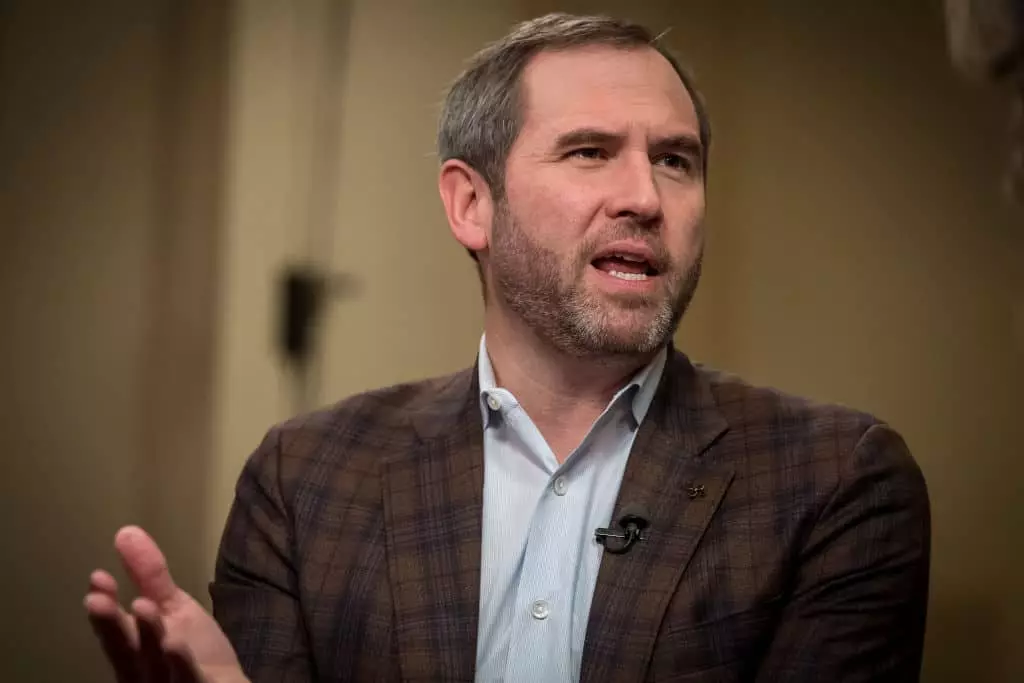In a recent weekend uproar, the cryptocurrency community found itself divided over the potential inclusion of various digital assets beyond Bitcoin in a proposed United States digital asset reserve. This discussion has intensified, with Ripple’s XRP at the center of the storm. Ripple CEO Brad Garlinghouse has addressed these critiques, arguing for a more inclusive approach within the cryptocurrency landscape. His remarks highlight a broader schism in the crypto community, pitting the ideals of maximalism against the necessity for collaboration.
This burgeoning controversy underscores a critical question: Should the digital asset reserve reflect a diversity of cryptocurrencies, or is it prudent to focus exclusively on Bitcoin? Garlinghouse has positioned himself as a proponent of inclusivity, promoting collaboration in what he describes as a “multichain world.” His plea for unity, albeit well-intentioned, has faced sharp backlash from staunch Bitcoin advocates.
In his statements, Garlinghouse emphasized that the cryptocurrency space should not operate under a zero-sum paradigm, where the success of one asset comes at the expense of another. He maintains that the entire industry stands to benefit if stakeholders prioritize cooperation over conflict. Claiming to be a longtime supporter of a level playing field, Garlinghouse pointed out that his portfolio includes assets from multiple chains, not just XRP.
He believes that any digital asset reserve set up by the U.S. government should not limit itself to Bitcoin, arguing instead for a representation that reflects the entire ecosystem. His assertion that “maximalism remains the enemy of crypto progress” resonates with those concerned about innovation’s potential stifled by entrenched opinions.
However, Garlinghouse’s critique of maximalism has not gone unnoticed. Prominent Bitcoin proponents have accused him of hypocrisy, suggesting that his corporate motives undermine his calls for unity. The juxtaposition of his advocacy and accusations of lobbying against Bitcoin’s inclusion raises important questions about the authenticity of his stance.
The rebuttal from Bitcoin advocates has been swift and biting. Michelle Weekly, an outspoken BTC supporter, lambasted Garlinghouse’s comments, suggesting that he embodies the problems afflicting the industry rather than offering solutions. Her bold claim that “maximalism is not the enemy, you are the enemy” reflects the intensity of the debate, illustrating the deep-rooted divisions that can threaten the industry’s collective progress.
Weekly’s perspective is further echoed by influential figures like Ryan Selkis, the founder of Messari, who disparages alternatives like XRP and Solana as “toxic.” He argues for Bitcoin to stand alone as the sole candidate for the digital asset reserve, emphasizing the importance of Bitcoin’s decentralized nature in safeguarding the tenets of economic freedom.
Moreover, Strike CEO Jack Maller has weighed in on the conversation, alleging that Ripple’s corporate dominance and centralization contrast with the foundational principles that Bitcoin advocates hold dear. He asserts that including XRP in any U.S. reserve would undermine the very ideals that cryptocurrencies seek to promote: decentralization and individual sovereignty.
This conflict within the crypto community raises critical implications regarding regulation, representation, and the future of digital assets. With President Donald Trump signing an executive order to explore cryptocurrency inclusion in national reserves, the potential formation of a digital asset reserve is no longer hypothetical; it is imminent. As the U.S. considers which cryptocurrencies merit inclusion, the discord among factions only complicates the dialogue.
The stakes are high, as the outcome of this debate could significantly influence regulatory frameworks and the future trajectory of the cryptocurrency industry. The die has been cast, ushering in a period of intense scrutiny and debate over what qualities define a legitimate digital asset.
Ultimately, the ongoing discourse challenges crypto enthusiasts to rethink their alliances and strategies. As maximalist beliefs come up against the calls for inclusivity, it is up to the crypto community to determine whether collaboration will lead to a more robust and innovative future or if entrenched divisions will hinder progress. The outcome remains uncertain, yet the need for dialogue is more pressing than ever in this dynamic and evolving digital landscape.













